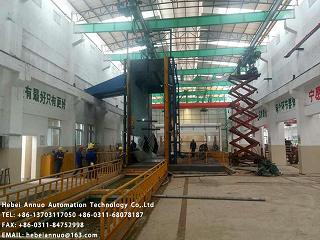
In order to meet the requirements of lightweight, low fuel consumption and safety in the development of automotive industry, galvanizing of high strength steel has become a research and development hotspot. Because of the improvement of people's living standard, we have higher requirements for the quality of life. The first and second generation automobiles can not meet the needs of people, so the third generation automotive steel must improve corrosion resistance in automotive applications. Hot dip galvanizing is the most economical and effective way to improve the corrosion resistance of high strength steel.

In order to improve the platability of the third generation automotive steel, the effect of pre-oxidation on the oxidation state of the steel plate surface and hot-dip galvanizing were studied. A large number of studies have confirmed that the oxidation of partial pressure on the surface of the steel plate before hot dip galvanizing is mainly achieved by annealing. The method of external oxidation can improve the wettability of steel sheet in zinc solution, but the content of manganese can not exceed 2%. Another way to improve the dipping property of steel sheets is to pre-oxidize the alloy elements before annealing. Pre-oxidation can make the oxidation depth of alloy elements greater, and the reduced sponge iron in the annealing furnace can be better soaked by zinc liquid.
Firstly, the oxide particles on the surface of pre-oxidized steel sheet are much less than those on the surface of non-pre-oxidized annealed steel sheet. When the pre-oxidation power point is + 5C, the oxide particles of the reduced steel plate are small and few, which is the most suitable for hot-dip galvanizing of steel plate.
Secondly, the growth of interfacial inhibiting layer particles is insufficient and the continuous inhibiting layer is not formed in the hot-dip plating without pre-oxidation. However, the interfacial inhibiting layer particles of the pre-oxidation hot-dip plating plate are closely connected with each other, and almost all of them form a continuous and compact inhibiting layer. However, when the pre-oxidation dew point is + 10C, the inhibiting layer is discontinuous because the Fe oxide layer on the surface is too thick and not completely reduced during the reduction process.
In a word, pre-oxidation can obviously improve the surface oxidation state of the third generation automotive steel and the growth of interfacial inhibition layer.
TEL: +86-13703117050 +86-0311-68078187
FAX: +86-0311-84752998
WhatsApp: 0086 137 0311 7050
WeChat: 13703117050
EMAIL: hebeiannuo@163.com
ADDRESS: Shijiazhuang City,Hebei Province, 051530,China